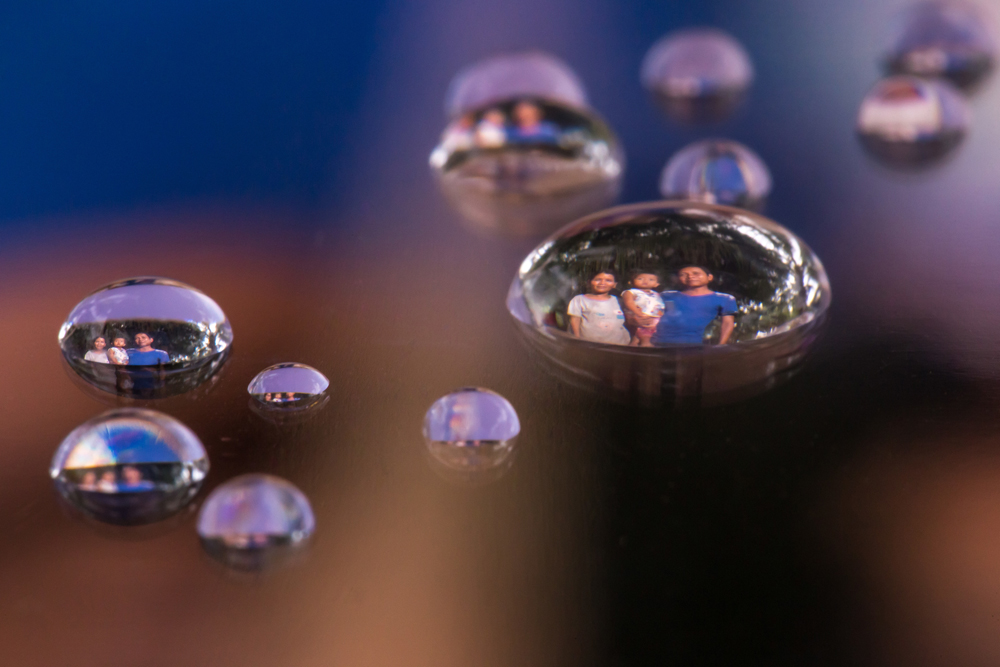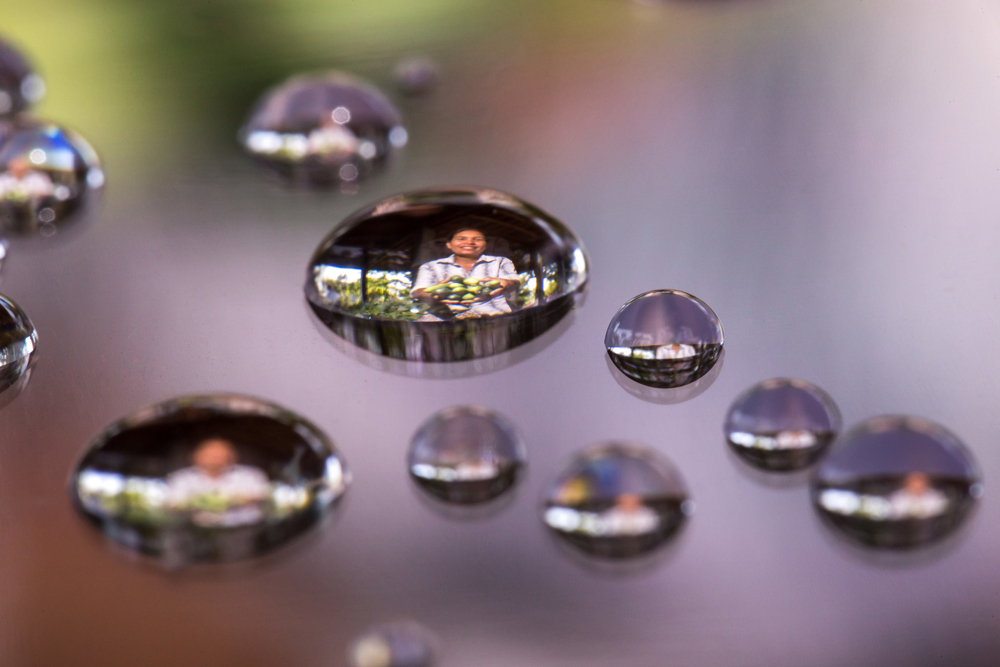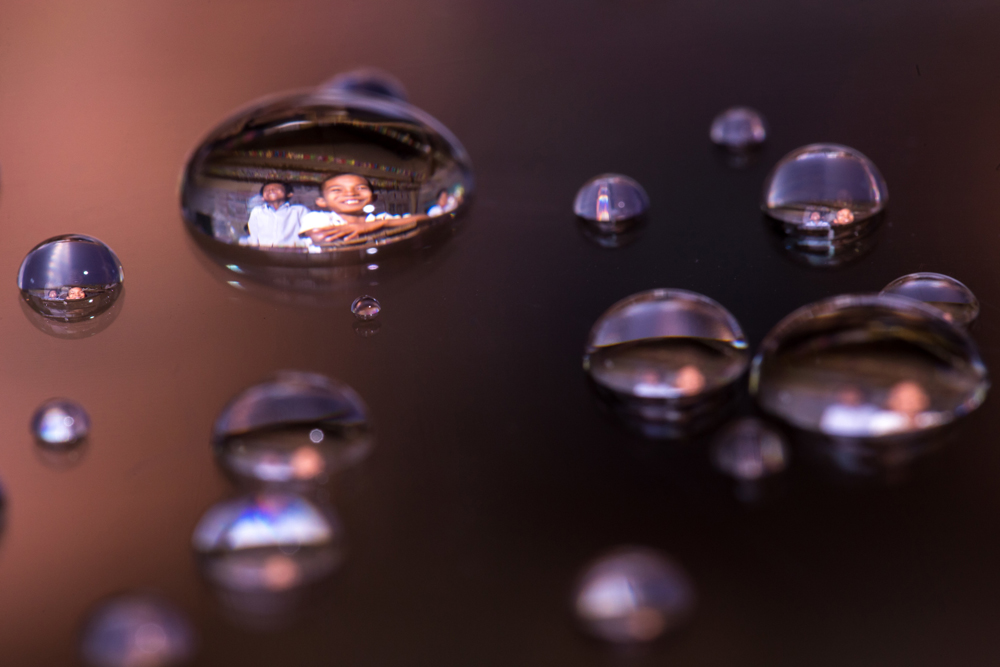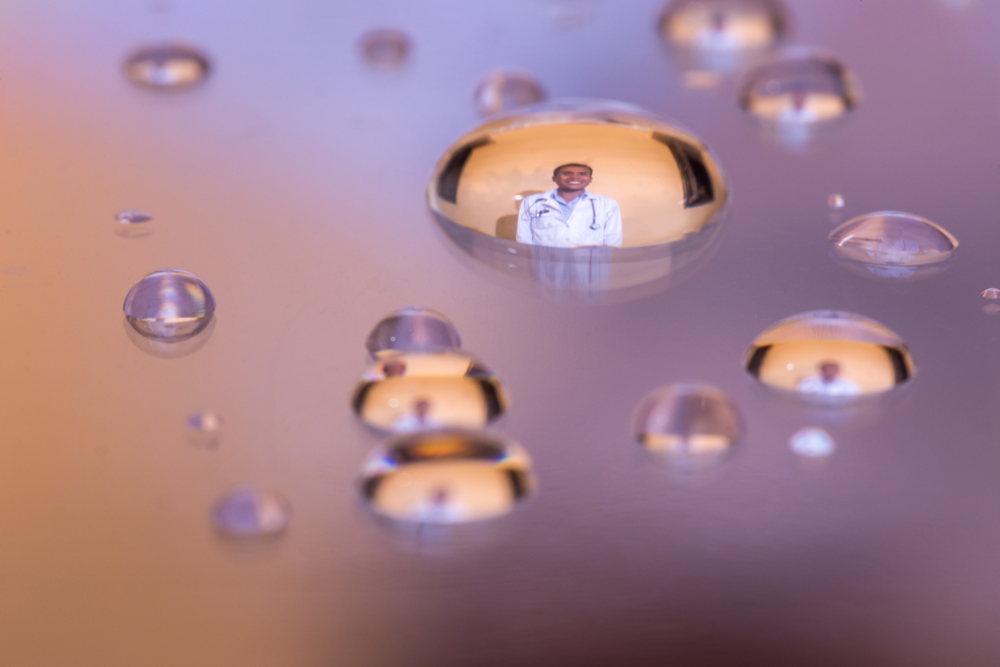
To mark World Water Day on 22nd March, Serbian photographer Dusan Stojancevic, in a collaborative project with WaterAid, has employed a unique photography technique to highlight how clean water transforms lives and raise awareness of the 663 million people around the world who still lack access…
To mark World Water Day on 22nd March, Serbian photographer Dusan Stojancevic, in a collaborative project with WaterAid, has employed a unique photography technique to highlight how clean water transforms lives and raise awareness of the 663 million people around the world who still lack access.
Since the year 2000, WaterAid says Cambodia has made the most progress in reaching people with clean water with 33 per cent more people now having access – a fact Mr Stojancevic, famous around the world for his water droplet art, wanted to celebrate in a special series of images he captured as he travelled across Cambodia, documenting the positive impact that clean water has had on families, schools, hospitals and businesses.
“When you come to a country like Cambodia you see a lot of poverty, but I’ve also seen a lot of amazing people with hope because they now have access to clean water,” says the 37-year-old from Belgrade. “For me that’s what great photography is about, it has to have a lot of depth in it; it has to have some kind of background story. I like to call this type of photography ‘droplet microcosms’; because it seems that in a tiny droplet you’re reflecting a much bigger story.”
Despite the progress made in Cambodia, however, more work is still needed – a quarter of the country’s population still lack access to clean water, a figure which rises to a third when considering rural areas alone.
Rosie Wheen, chief executive of WaterAid Australia, says the organisation wants to use the day to “celebrate the progress countries like Cambodia have made, but also reflect on the daily struggle to access clean water for the world’s poorest people”.
“[About] 663 million people still don’t have access to clean water and one child dies every two minutes from diarrhoeal diseases caused by dirty water and poor sanitation. Clean water is not a privilege – it is a basic human right. That’s why we’re calling on governments across the world to deliver on their promises to meet the UN sustainable development goal of reaching everyone, everywhere with clean water and sanitation by 2030.”
Here’s a selection of the images and the stories behind them…

PICTURE: WaterAid/ Dusan Stojancevic
Roeung Mom, 33, lives with her husband Mor Tei, 32, their two-year-old daughter Sreymuk, and other relatives near Pursat. Their main source of water is a well behind their house, which dries up in dry season and gets contaminated by flood waters when there is heavy rain, which has a devastating impact on the health of the family as well as their rice fields.
Tei: “The water is not safe, especially during the rainy season when the river can flood. This contaminates the water in the well and makes it smell. In the last five years, there have been some particularly bad floods. I’m worried if the flood comes again my rice fields will be destroyed.”
Mom: “We all suffer from diarrhoea because of the water, especially the young children. Our first son died when he was a year old because of the poor quality of the water during a very bad flood. He was vomiting and had diarrhoea. We took him to the hospital, where he passed away; it was so difficult for us. Two other children also sadly died as babies.
“I’m now so worried about my daughter. We got a water filter a few years ago, and I also now boil water for my daughter to try to make sure it’s safe, even during the floods. I didn’t always boil water before as I was too busy working, but now I run a grocery store and have time to look after my daughter.”
When the well dries up in the dry season, the family uses a water pump that they share with other families.
Tei says: “It’s not easy using the shared pump as sometimes we need to queue, and we have to pay for electricity for the generator, which is very expensive and it’s hard to get enough water for my rice fields. When we last had to use it, we couldn’t afford to buy clothes for our daughter.”
Mom adds: “I think it will be better for us if we get a rainwater harvesting system and can get clean water to drink all year round, which will benefit our daughter’s health. We will also be able to save money and earn more so we can buy her clothes and send her to school. We dream that she will be a doctor and help other children in the future, because we weren’t able to help our children like we wanted to.”

PICTURE: WaterAid/ Dusan Stojancevic
Keo Vannary’s disability made collecting water very difficult, and she needed help from her family, meaning her children sometimes had to skip school. During the dry season, their well would dry up and they had to buy water, which was expensive. As a result, the family couldn’t pay for all the children to go to school, so the eldest had to drop out.
Now they have a reliable clean water source, the family is healthier, it is easier to collect water, and Vannary, 45, has been able earn a second income by growing cucumbers to sell. The business has brought in more money so the family can keep all the other children in school.
“Before I got the new water system, we had our own hand dug well, but there wasn’t enough water and it wasn’t clean. It was yellow and smelt bad, like rust. We used to get diarrhoea. So I got a water filter and would boil it when I could.
“My bad leg means I cannot stand for a long time and cannot carry heavy things. I could not carry the water up from the ditch so my husband had to collect it. If he wasn’t around, my children and I had to collect it together, and so sometimes they had to miss school.
“The big problem before was during the dry season when there was no water to use. I had to spend money to buy water. It was difficult to pay for my children to go to school. My oldest child had to stop studying at 15. I felt sorry for my first daughter but I had no choice.
“I run a small cafe to sell porridge and since I got a new water source last year, I have also been able to grow my own vegetables. I can grow cucumbers all year round and get three harvests, and so am earning more money from two businesses. I also save money as I don’t need to buy water.
“Now I’m very happy as I have more money to send my other three children to school and our living conditions and health have improved. The closer water source and the new generator have saved me time and energy and I no longer need help to get water; I am more independent. I’m happy because I can get water whenever I want and can do it without having to bother the others so my children can study and my husband can work.”

PICTURE: WaterAid/ Dusan Stojancevic
After toilets and clean water were installed in Ros’ school, WaterAid helped run hygiene training helping change the students’ behaviour which had a huge impact on the children’s health, attendance, and performance.
Says the 12-year-old: “I’ve learned how important it is to wash your hands with water and soap. You must use clean water and must use soap to kill the bacteria to stay healthy. I also taught my family about handwashing.”

PICTURE: WaterAid/ Dusan Stojancevic
For 20 years, Gnip Mech, head of midwifery and hygiene at Sampov Loun Hospital in Battambang, has had to face the challenge of treating patients at Battambang Referral Hospital without a reliable source of clean, safe water.
Last year, WaterAid helped install a generator and water filter system at the hospital, helping provide clean, safe water to the hospital all year round. The staff also received hygiene training, and as a result, the environment and quality of care at the hospital has improved, as has the health of the patients.
He says: “Before, the water supply at the hospital was dirty and it had a huge impact on our hygiene. There was not enough water and we were concerned about transmitting infection to our patients. But we had no choice. The patients would get aggressive and blamed the team for the hospital being dirty. We had to be patient with them but felt so ashamed of ourselves. We felt very upset and sorry about the conditions but we did not know what to do.
“Whatever water we could collect, we did, such as rainwater, which we used to store in buckets to make sure we had some water at all times. We would wash our hands at the same time using the same flow to save water, which wasn’t hygienic. Our staff used to have to go home to have a shower if they needed to wash mid-shift, before returning to the hospital.
“There has been a big impact on the health and hygiene of patients and staff now that we have access to clean water, and after our hygiene training, everyone started to improve their behaviour.
“When we got more access to clean water, I began to feel proud. We now feel happy and grateful that we have been supported to have access to clean water. It’s a big improvement that things can now be clean. Water is everything, and it is so important for good hygiene. If a hospital doesn’t have enough water, or it has poor quality water, the hygiene level is zero.”





